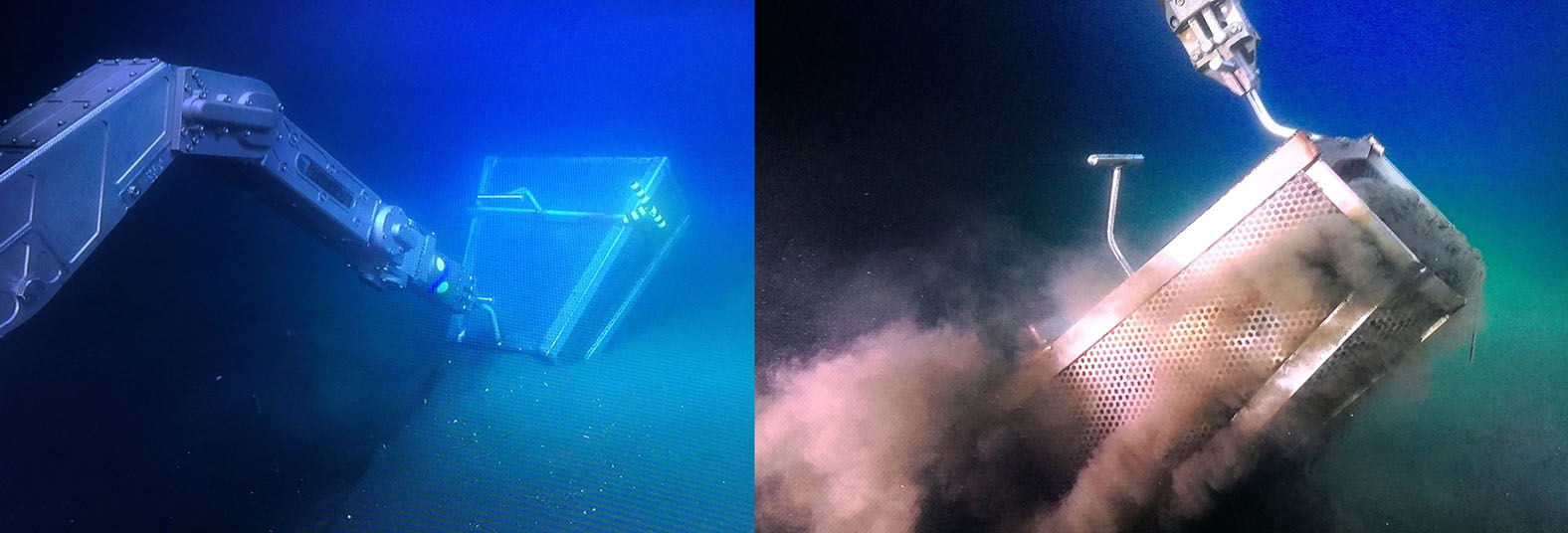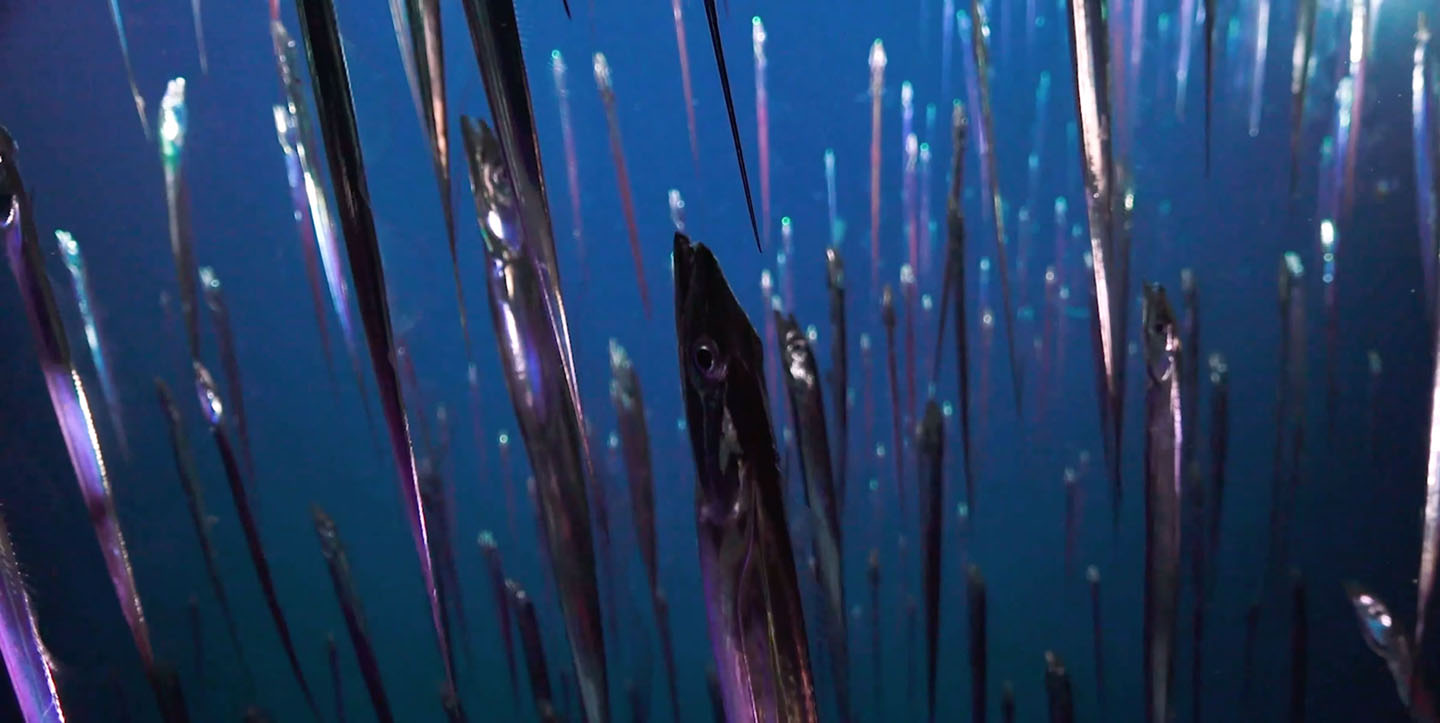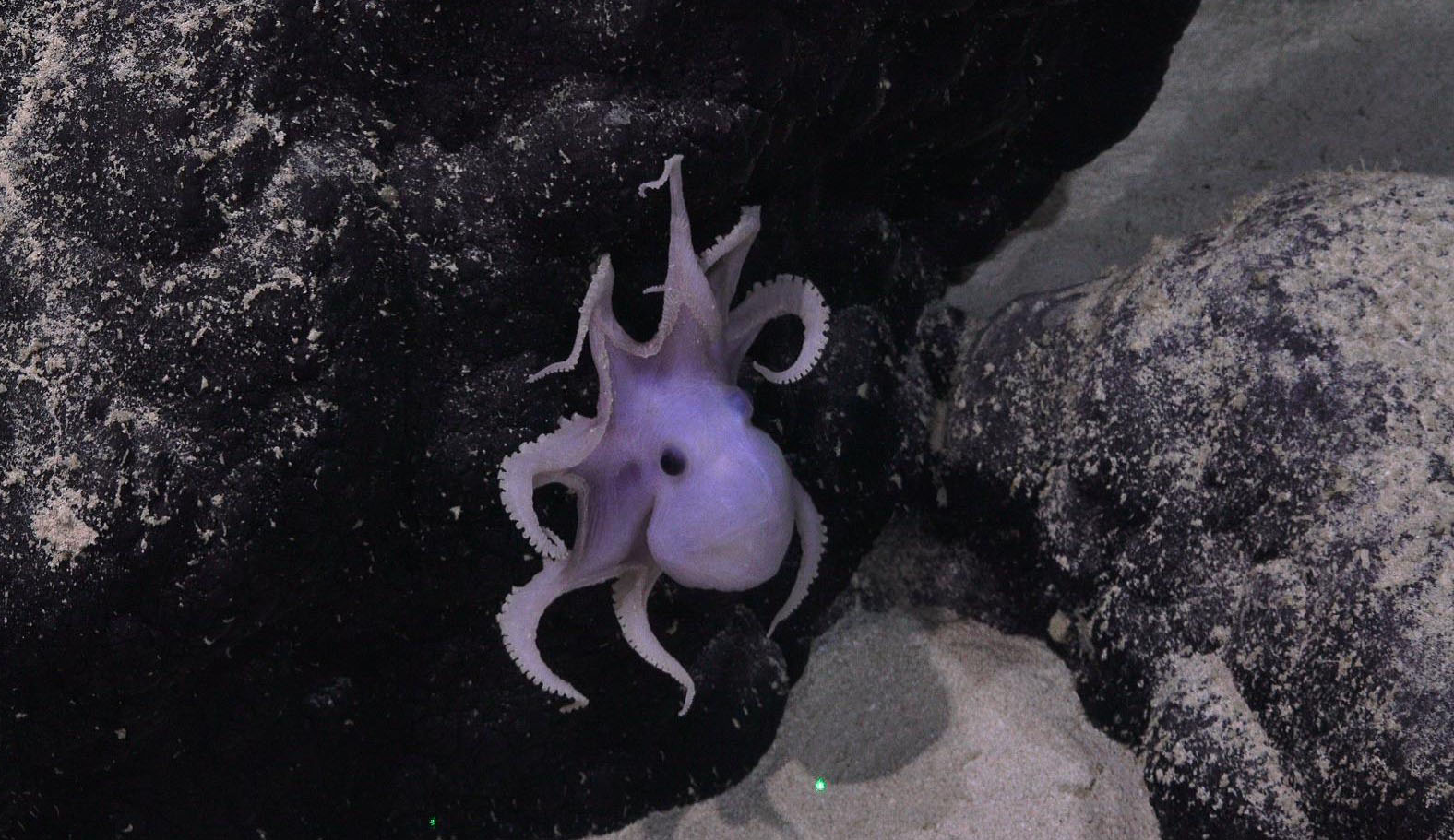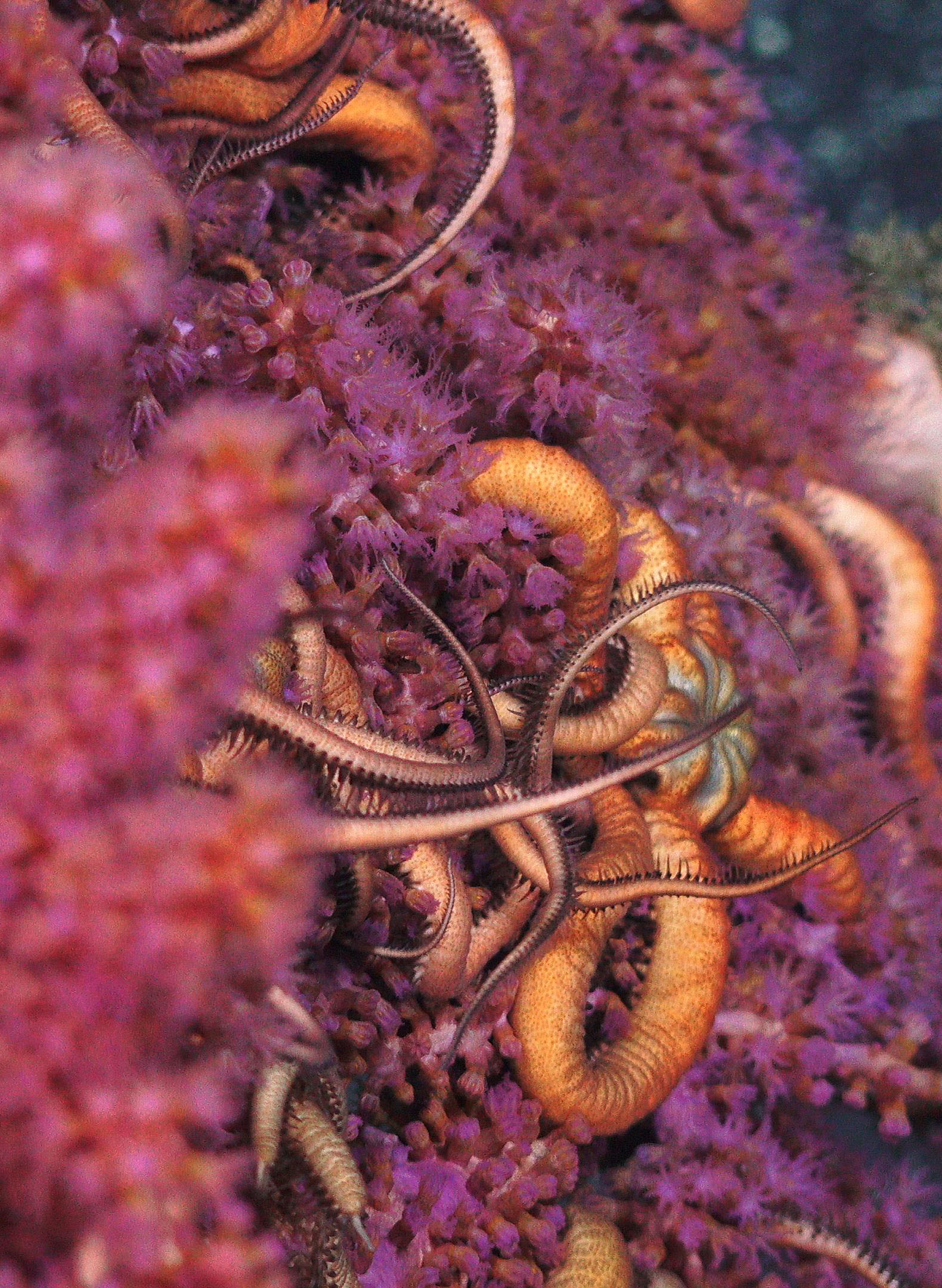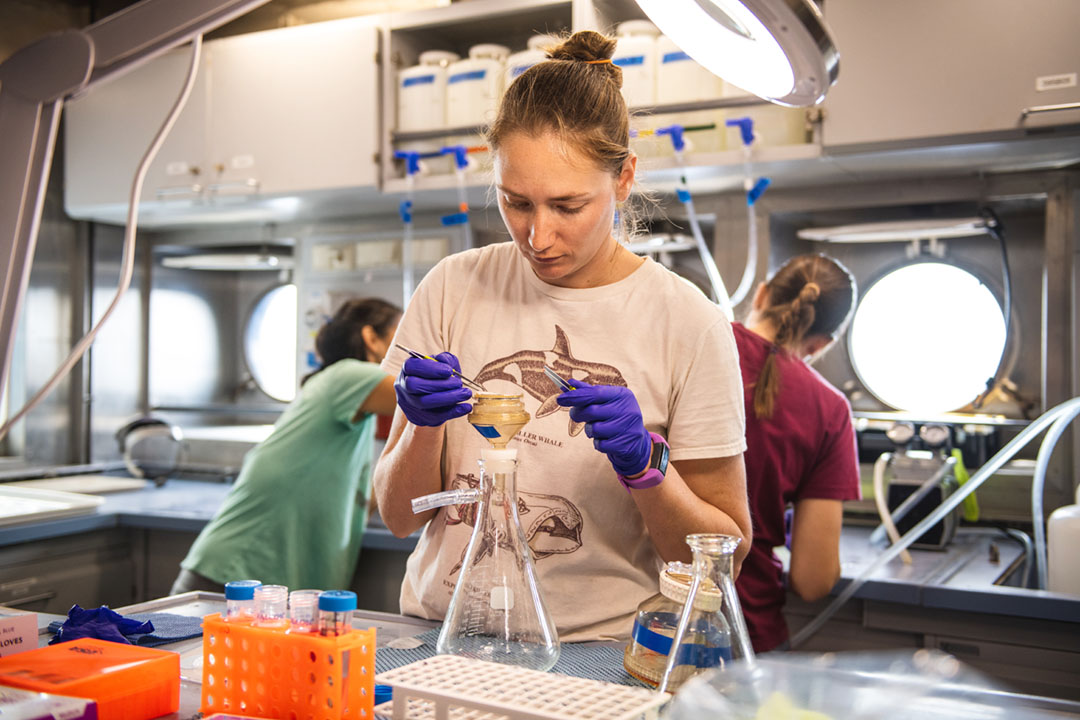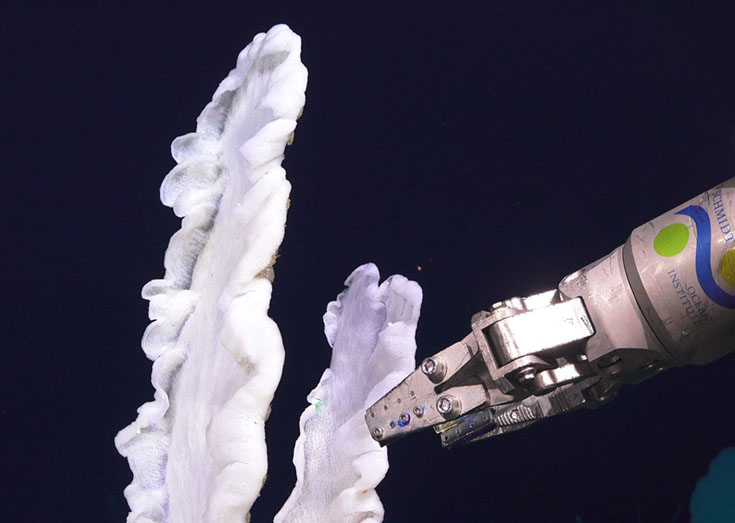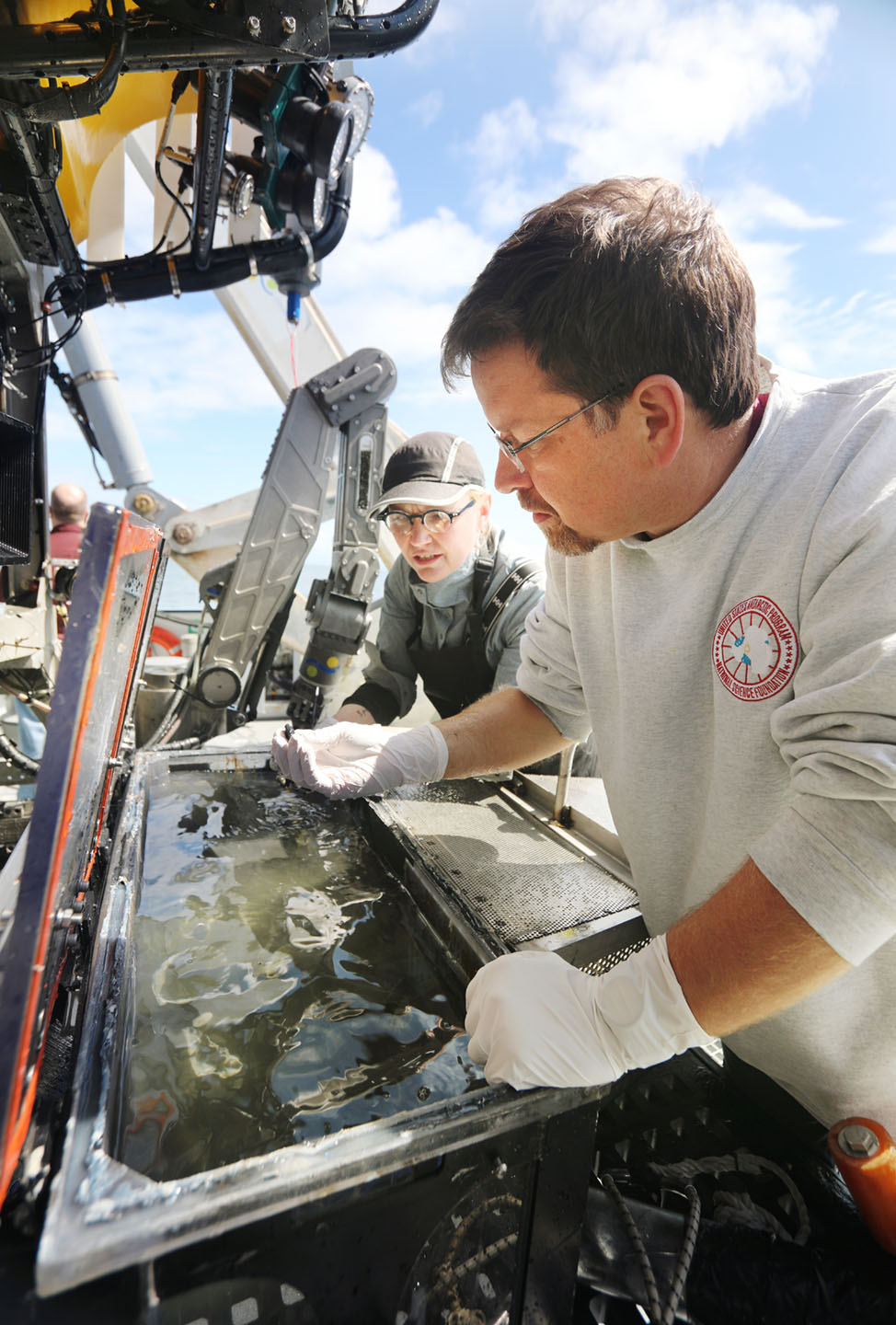“This is an amazing natural laboratory to document incredible organisms and better understand how they survive in extremely challenging environments… we were continually surprised, catching our breath, and in awe of nature’s majesty.”
— Dr. Samantha Joye, University of Georgia
Researchers working on R/V Falkor made remarkable discoveries and scientific advancements throughout 2019, broadening the scientific community’s understanding of unique ecosystems and fueling future ocean exploration.
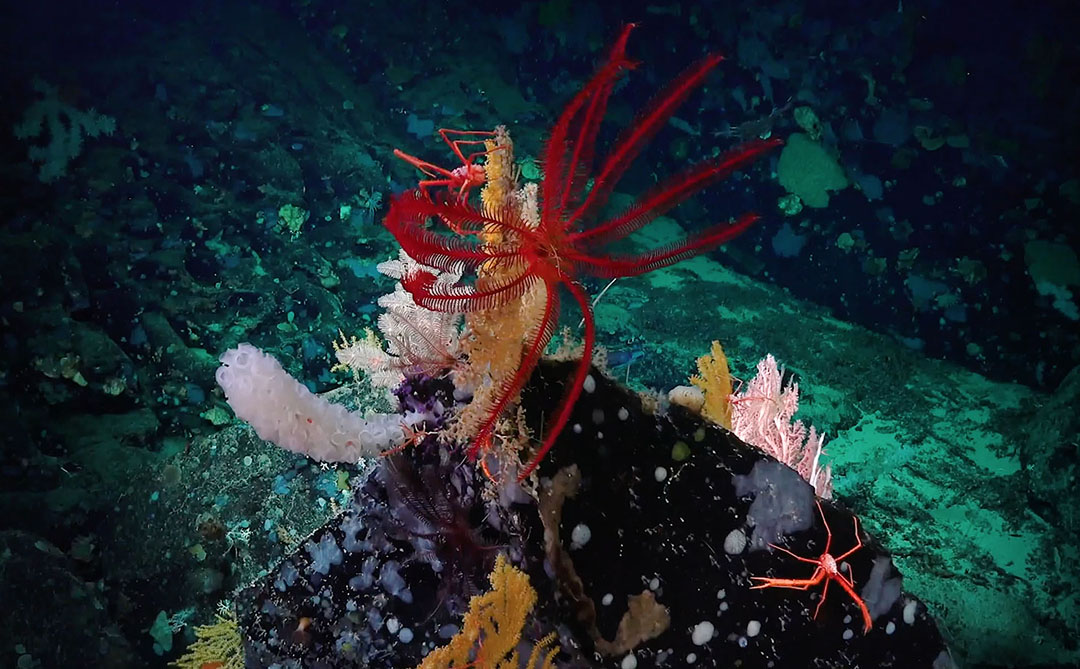
ENLIGHTENED SEAMOUNT DISCOVERIES
The first surveys of never-before-seen seamounts around Isla del Coco National Park, a UNESCO World Heritage Centre in Costa Rica, led to the discovery of four novel deep-sea corals and six ocean species, providing insight into unexplored deep-sea biogeology. The science team constructed a complete characterization of each seamount, including how oxygen dynamics control community structure. The findings have led to a call to protect these specialized ecosystems (#CostaRicaDeep).
Coral genomic studies across the Emperor Seamounts provided the first complete assessment of coral diversity across the Main Gap in the Mid-Pacific. This new data indicates an important boundary of deep coral species, including Octocorals, between the Aleutian and Hawaiian Ridges.
A boundary as sharp as what was observed (over a distance of 100 to 125 miles) is an unheard of occurrence in the deep sea. Octocorals provide essential habitat for deep-sea fish and other organisms; several new corals species were also discovered, including a new type of bamboo coral (#DeepCoralDiversity).
Another expedition in Hawaiian waters focused on coral diversity along Necker Ridge. The data retrieved will provide a better understanding of seamount communities and the connection between Pacific deep- sea ecosystems. The science team has started geochemistry measurements to characterize the modern water column and create paleoceanographic reconstructions. They are looking at deep-sea coral distributions to reconstruct past changes in ocean pH, and nutrient changes over decades (#BridgeOrBarrier).
CRYPTIC WHALES
In a search for a species of beaked whale never seen by researchers, scientists used a combination of tools, including environmental DNA (eDNA) analysis and acoustics, for an unprecedented study of the elusive mammal. During the cruise, three Drifting Acoustic Spar Buoy Recorders (DASBRs) designed by NOAA were deployed at sites around the Hawaiian Islands. The acoustic data was coupled with continuous CTD sampling, allowing for the acoustic detection of the beaked whales to be associated with genetic information from water samples. The data are still being analyzed, but knowledge of these whale communities is essential for their protection and reducing negative human impacts on the whale population (#ListeningToWhales).
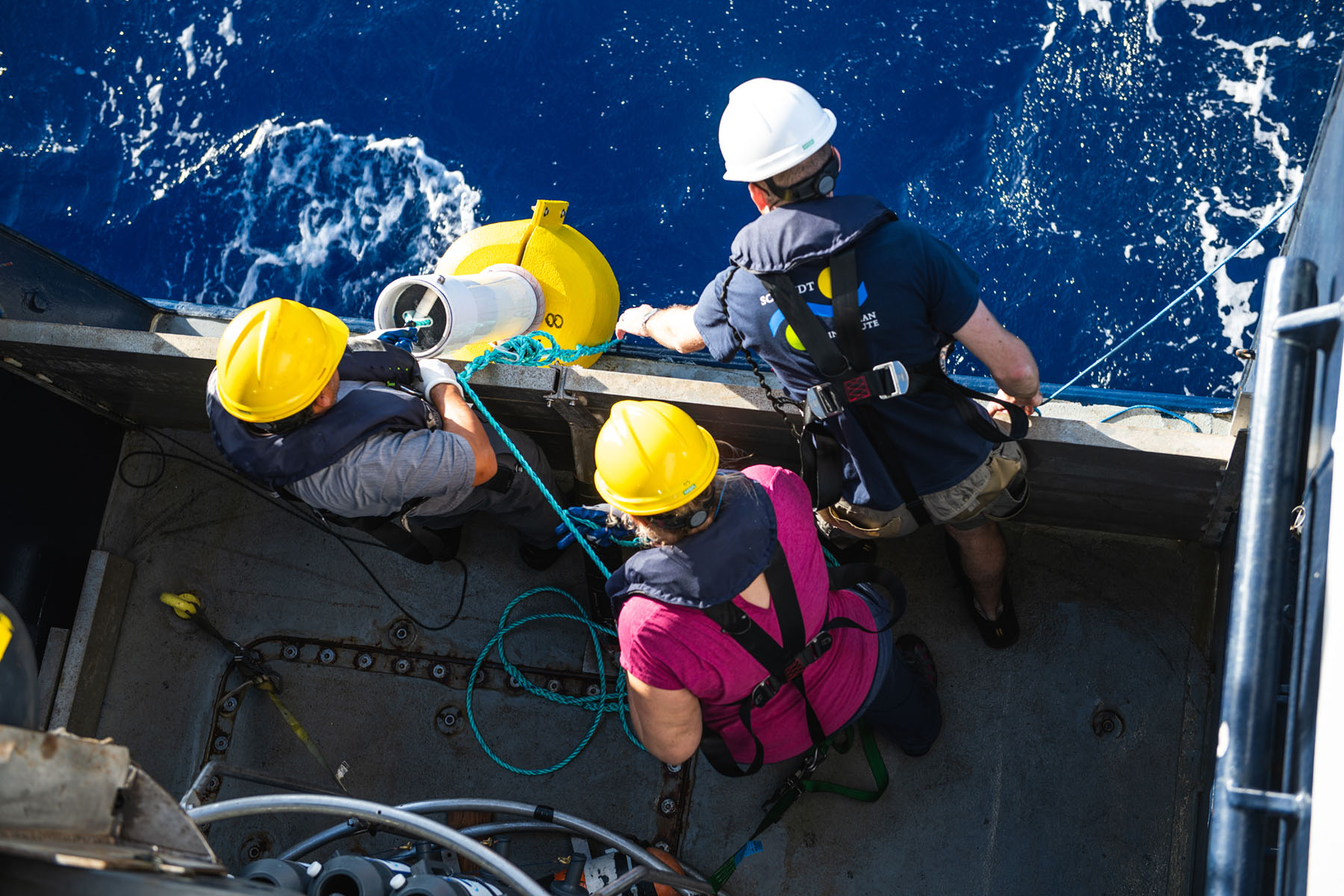
UNCOVERING NEW WORLDS
Large mineral towers, cold seeps, and oil chimneys were discovered in the Sonora Margin and Guaymas Basin in the Gulf of California. Surprisingly, these harsh and seemingly inhospitable conditions were teeming with biodiversity. Creatures thrived in the metal-laden minerals and highly sulfidic fluids collected across these features. Among these newly discovered geological formations, previously unknown features were also revealed: flanges angled downward that act as pooling sites for discharged fluids, creating the illusion of a mirror for those observing the super-heated (366°C) fluids beneath them (see image on at top of page). The first-of-its-kind sampling of vent fluids and microbial ecology represents a crucial step towards characterizing the relationship between hydrothermal system environment and ecology and how such diverse communities are supported (#MicrobialMysteries).
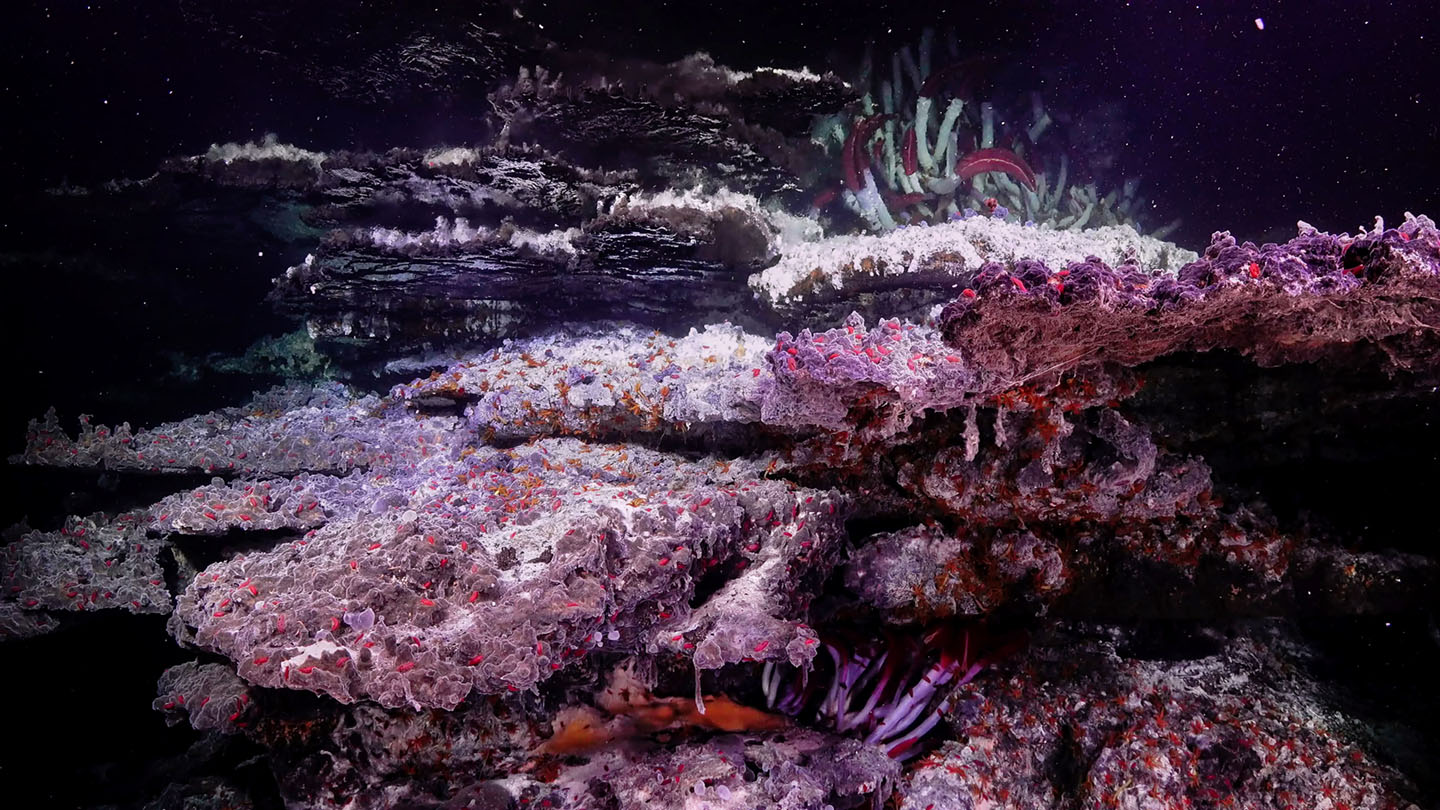
The first study to simultaneously collect a wide range of data at cold seep sites in the Pacific Northwest was completed aboard Falkor to address crucial knowledge gaps of deep-sea systems. The science team constructed an in-situ laboratory that produced unprecedented knowledge of gas hydrate degradation, seafloor seepage, and aerobic oxidation of methane seep systems at the edge of stability. Extensive mapping revealed new water column gas plumes that could be traced to seafloor seeps, highlighting their role in injecting carbon and other nutrients into the ocean (#HuntingBubbles).
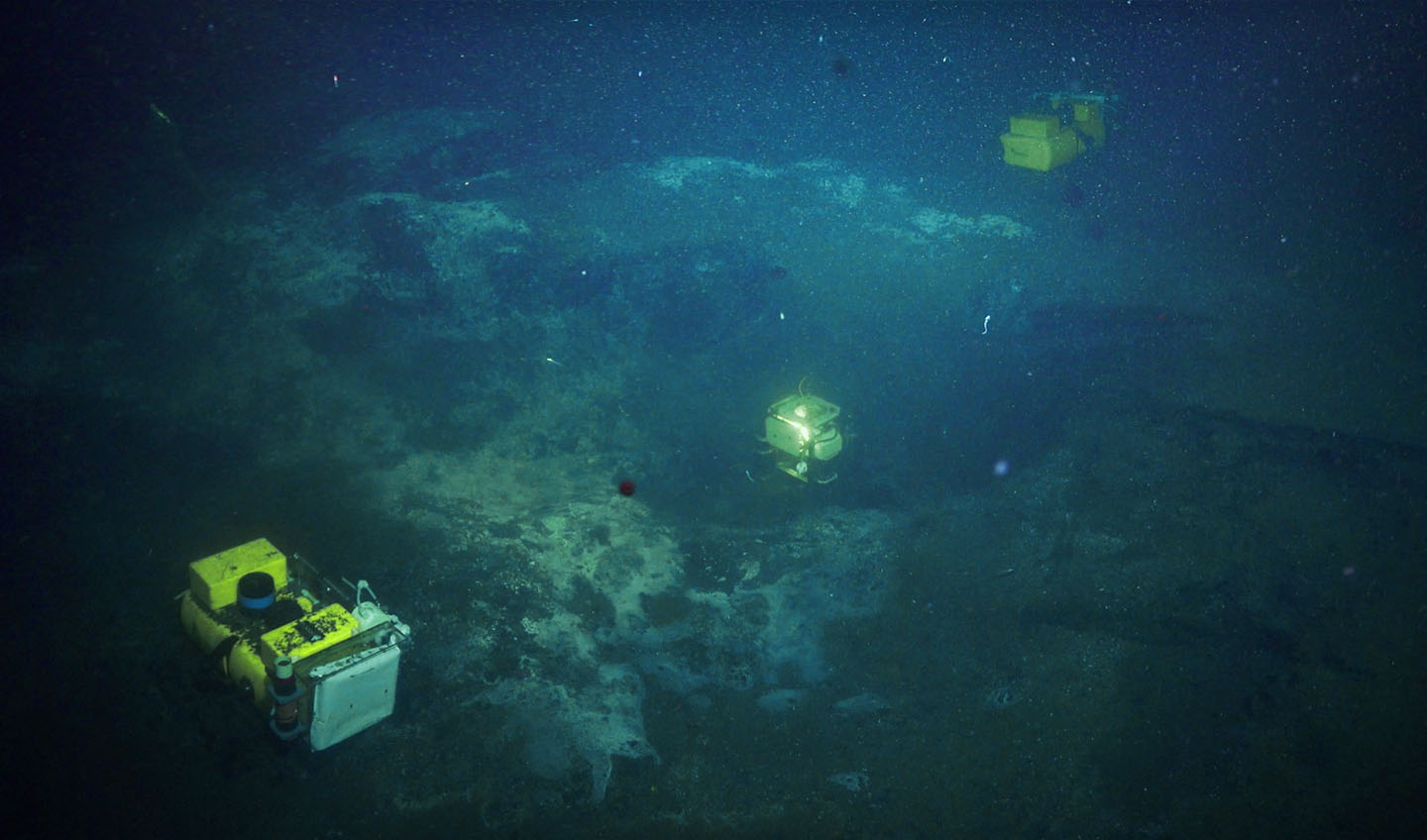
Additionally, on a quick expedition in the summer, a team of NASA scientists found a one cubic millimeter, unmelted fragment of a meteorite during a three-day search aboard Falkor in the Olympic Coast National Marine Sanctuary. The sample allowed the team to measure the unusual, metal-rich silicated iron meteorite, but further testing is still needed to confirm the meteorite type. If confirmed, this will represent the eighth “meteorite fall” of this type seen to date, and one of 261 found in total (out of over 63,000 known individual falls) (#SeekingSpaceRocks).
